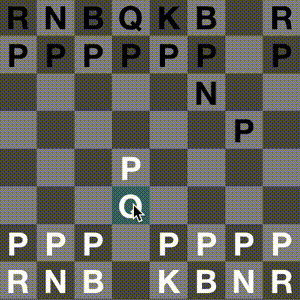React Native: First Experience
My company recently implemented 10% time, and it conveniently started the same day that React Native was open sourced. I took the chance to play around with it a bit by making a simple iOS chess app. I’ve done barely any Objective C or Swift development, so this is all from the perspective of someone who writes a lot of React (in primarily Dart and some JS) and no native iOS code.
The source code for the project I made can be seen here.
Getting Started & Development Workflow
Getting a project up and running was lovely and smooth. I ran react-native init and immediately had a running iOS app. There was no need to even look at the Objective C files, although if you do look it’s pretty clear all you need to do is specify your JS location and create a RootView with it. Development workflow was great - hitting Command + R in the iOS simulator triggers a reload of the JS with no relaunch of the application. Much, much faster than my Phonegap development experiences. Javascript exceptions were also nicely handled - the simulator shows you a nice stack trace with clickable line numbers.
Layouts
The first learning curve I hit was in attempting to lay out my chessboard. I saw in the documentation that I could use flexbox for my layouts, read Chris Coyier’s excellent Guide To Flexbox, and banged out some styles. And then I was immediately confounded when everything looked terrible and didn’t do what I had told it to. Eventually I re-read the documentation and realized that React Native implements some of flexbox - the grow, shrink and order properties I was trying to use are not supported. Percent-based measurements are also not supported. Once I got used to the subset of CSS that I had at my disposal, layouts went fairly smoothly and I didn’t run into anything I couldn’t do.
Animations
Native animations was one of the features I was most excited about. I’ve used Phonegap for a few projects and animations in the webview were one of the clearest sore thumbs. React Native provides two animation APIs, Animation and LayoutAnimation. I used the former to animate piece movements.

I think this specific API is actually being removed/changed, but here’s what an animation with it looks like:
Animation.startAnimation(this.refs['this'], 500, 0, 'easeInOutCirc', {position: [x, y]});The position coordinates look the same way they would in the DOM - (0, 0) is the upper left corner of the screen, not the center. The second argument is the animation duration, and the second is the delay. I also used animations to fade in the chessboard and pieces by animating the opacity property.
Miscellaneous
- JavaScript language features - the js in React Native is run in JavaScriptCore, which implements ECMAScript 5.1.
- You can hit
Command + Din the simulator to debug your JavaScript with Chrome dev tools.
Conclusions
Using React Native was great in all the ways that using React is great - UI code is declarative, state is explicit, and UI implementation details are abstracted away into components. It was a much different experience than any other cross-platform native app solution I’ve used before - writing JS for iOS with React Native felt natural and solid. I have run into a few bugs, but I’ve gotten quick responses from contributors on Github in every case. Overall this was a really fun experiment, and I’m looking forward to doing some more in-depth work with it and seeing the APIs evolve. Next I’m planning to do some integration with a backend, likely with Parse.